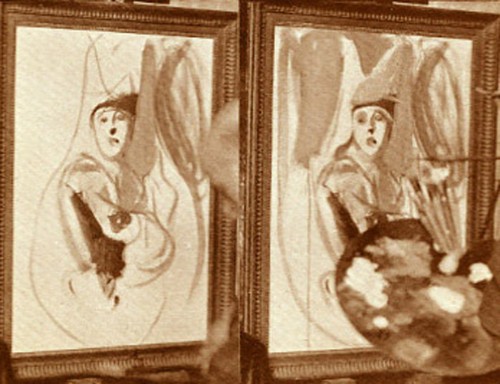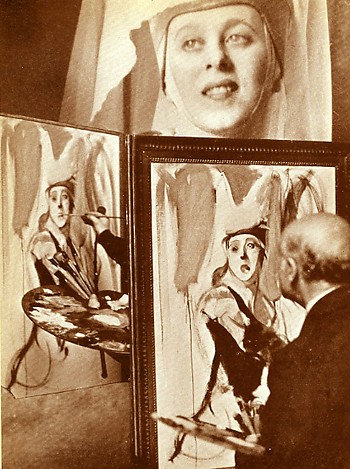|
7. The General Effect

The gradual development of the main masses.
Q: Do you really mean that you begin straight
away with the brush?
"Why, of course. With my brush I paint in
a few lines to indicate the placing of the figure
on the canvas. As a first step this is essential
since the way in which the figure is placed in
the space available is vitally important in the
decorative arrangement of the picture. It is the
foundation of the whole design."
Q: What next?
"I begin to deal with the head, seeking
to express by means of light and shade the construction
of the skull and defining accurately the larger
planes. In this I aim always at as correct a realization
as possible of the tones of nature which I see
before me, and I strive constantly to establish
the exact relation between the head and its surroundings.
All this is a process of gradual building up,
but, mind you, it must be done rapidly and directly."
8. The Evolution of Detail

Indicating the
general form
of the mouth.
Q: I take it that at this stage you are dealing
only with the general effect; when do you begin
to concern yourself with the details?
"How can you separate details from the general
effect? The details are a part of the general
effect and come gradually and naturally as I develop
it."
Q: But surely you cannot get correctness in
your forms without drawing them precisely?"
"Can't you see that I have been doing nothing
else but drawing from the beginning? I draw by
putting lights and shades in their right places,
expressing the forms thereby."
Q: It seems to me that you have been painting
all the time, not drawing.
"Certainly you have seen me painting all
the time, but whatever I do in the way of putting
down lights and shades in their correct relationship
to one another develops naturally both likeness
and character, and that is what I call drawing.
. Don't you realize that I draw with the brush
and that all my painting is drawing?"
Q: I am sorry to have been so dense, but I
think I grasp your meaning now. May I suggest,
though, that while we have been talking, your
sitter has got very tired and ought to have a
rest.
"You are quite right, a rest is overdue.
I do not usually go on long enough to bring my
sitter so near to collapse and on this occasion
I fear that I have been too exacting. But my excuse
must be that I was especially anxious to secure
a record of the fascinating movement and expression
which Miss Ffrangcon-Davies is giving me before
any change was made in the pose."
|